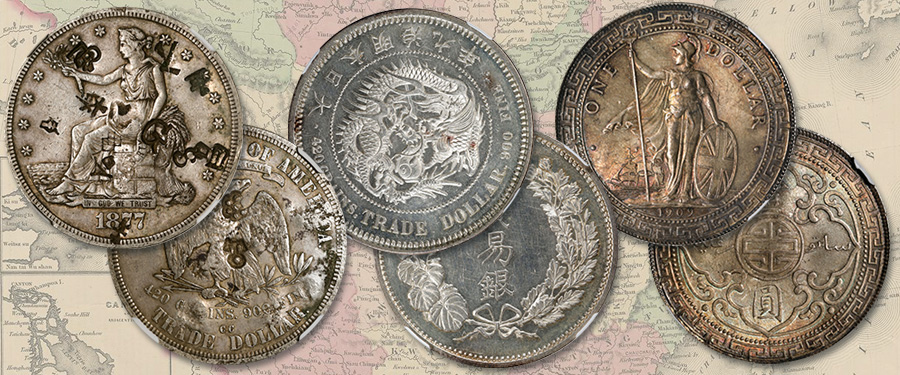
Western interest and trade within China is relatively recent, only beginning in earnest at the end of the 19th century. Industrialized powers were interested in China for the many goods she produced that were demanded by Western markets. The problem for Industrial powers was that they produced very few goods that were demanded by the Chinese population, raising the question of how they would pay for Chinese products. China had traditionally chosen to receive payments in silver, which resulted in a huge influx of Latin American Reales coinage circulating throughout China. It was against this background that several foreign nations choose to produce special silver coinage specifically for circulation in China. The first nation to do so was the United States, who produced trade dollars between 1873 and 1885 (although after 1878 only Proof trade dollars were struck). The coin immediately proved unpopular in China and did not circulate widely. Instead, they were often reimported into the United States below face value and recirculated. This problem was so rampant that Congress demonetized the trade dollar in 1876, making it the only coin ever demonetized by the United States (they were later remonetized by the Coinage Act of 1965).
At the same time, Japan also issued a trade dollar for use in China. It was slightly heavier than a standard Yen and featured the words "TRADE DOLLAR," although the design elements were otherwise essentially identical to the Yen. The Japanese trade dollar fared little better than the American version and was only produced for three years.
The final attempt at a trade dollar was undertaken by the British Empire from 1895 until 1935, and this was far and away the most successful western trade dollar, finding a foothold in commerce within the British colony of Hong Kong. With the emergence of China as a truly global power and the advent of the Great Depression, the need for a trade coinage based on silver withered away, as new theories about money took hold in the West and in China. These coins, however, provide a window into the past and display a portrait of commerce between industrialized nations and China during this time. In the upcoming May Hong Kong auction, Stack’s Bowers Galleries is pleased to offer a plethora of examples from each country highlighted by a NGC MS-62 Prooflike Year 9 Trade Dollar from Japan, a 1909-B Great Britain Trade Dollar in NGC MS-66, and an 1877-CC Trade Dollar certified AU Details—Chopmarked by NGC standing out among these selections.
We are always seeking world and ancient coins, medals, and paper money for our auctions, and are currently accepting consignments for the June Collectors Choice Online (CCO) auction and our August 2022 sale. If you would like to learn more about consigning, whether a singular item or an entire collection, please contact a consignment director or email info@stacksbowers.com today and we will assist you in achieving the best possible return on your material.





